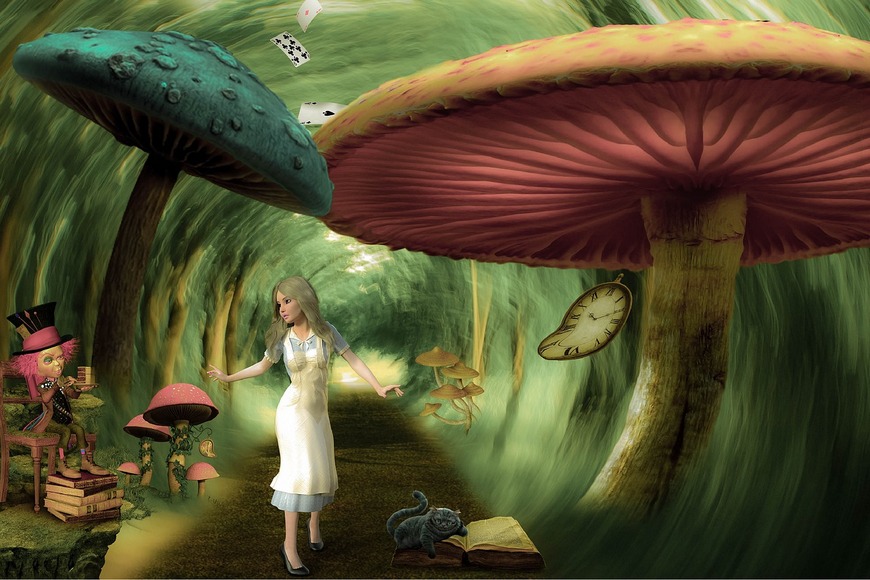Alice in Wonderland by Lewis Carroll

There are children’s books that you want to return to even in adulthood, reread them, discovering new meanings that were missed during the first reading. One such book is certainly Alice in Wonderland, which is unfairly considered exclusively children’s literature. I have noticed that it is even more interesting to read now than when I was a child, all thanks to the talent of Lewis Carroll, who managed to wrap complex absurdist content in the wrapper of a children’s fairy tale.
In addition to unusual characters and paradoxical logic, several philosophical concepts can be found in this text that allow us to understand the workings of language and human thinking. Which ones? Let’s take a look.
A few words about the book
“Alice in Wonderland” is the work of the English mathematician Charles Lutwidge Dodgson, better known as Lewis Carroll. An Oxford teacher, clergyman, and amateur photographer, Carroll was a rather reserved and shy man, uncomfortable around adults.
Carroll felt much freer in the company of children, to whom he dedicated his few literary masterpieces. “Alice in Wonderland” was written for a particular Alice, a girl of 11, the daughter of the vice-chancellor of Oxford. Carroll loved walking with her and telling her absurd tales, which she once asked her to write down. And so Alice in Wonderland appeared.
Seven years later Carroll would write a sequel, Alice in Wonderland, where Alice’s journey would continue in an equally surreal world. We will use examples from both books, as Carroll builds them on a similar principle.
How to read “Alice”?
Before we go directly to “Alice,” we need to understand exactly how we can read books. The Italian philosopher Umberto Eco distinguished two kinds of reader: the empirical reader and the ideal reader. The ideal reader is one who treats a book as a text: understands how it is arranged, what the writer is doing, and the ways in which it evokes certain feelings and emotions in us. That is, the ideal reader sees how the text is created. The empirical reader, on the other hand, is completely immersed in the work and follows the plot without being aware of exactly how it is constructed.
As children, we tend to read Alice in Wonderland as an empirical reader, fully immersed in the surreal world of the tale. I, on the other hand, propose to look at this text as an ideal reader. And here is where Alice in Wonderland truly unfolds for us.
The Paradoxes of Meaning
Lewis Carroll is a professor of mathematical logic, and the main point of Alice lies precisely in the area of logical paradoxes. On the face of it, it seems simple: Carroll creates a magical world in which complete absurdity is at work. But let’s take a closer look at it.
The world of this fairy tale is not just different from our own, not just externally, but internally. And it’s not just talking animals and strange games, the fact that it does not work the laws of our logic. But this does not mean that this world is completely mired in chaos. There is certainly logic within this world, just not the same logic that we have. For example, the Hatter’s clock there always shows the day of the week because he always has 6 p.m. This is his punishment for trying to “kill time,” and Time is offended by it.
Carroll was not interested in simply inventing a magical world; he thought thoroughly about its paradoxical logic, which is not like ours, but is internally consistent.